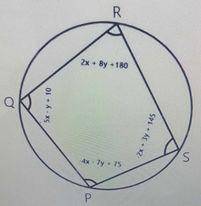
PQRS is a cyclic quadrilateral. Find \(x\) + \(y\)
50
60
15
0
Correct answer is D
∠PQR + ∠PSR = 180o (opp. angles of cyclic quad. are supplementary)
⇒ 5\(x\) - \(y\) + 10 + (-2\(x\) + 3\(y\) + 145) = 180
⇒ 5\(x\) - \(y\) + 10 - 2\(x\) + 3\(y\) + 145 = 180
⇒ 3\(x\) + 2\(y\) + 155 = 180
⇒ 3\(x\) + 2\(y\) = 180 - 155
⇒ 3\(x\) + 2\(y\) = 25 ----- (i)
∠QPS + ∠QRS = 180o (opp. angles of cyclic quad. are supplementary)
⇒ -4\(x\) - 7\(y\) + 150 + (2\(x\) + 8\(y\) + 105) = 180
⇒ -4\(x\) - 7\(y\) + 75 + 2\(x\) + 8\(y\) + 180 = 180
⇒ -2\(x\) + \(y\) + 255 = 180
⇒ -2\(x\) + y = 180 - 255
⇒ -2\(x\) + \(y\) = -75 ------- (ii)
⇒ \(y\) = -75 + 2\(x\) -------- (iii)
Substitute (-75 + 2\(x\)) for \(y\) in equation (i)
⇒ 3\(x\) + 2(-75 + 2\(x\)) = 25
⇒ 3\(x\) - 150 + 4\(x\) = 25
⇒ 7\(x\) = 25 + 150
⇒ 7\(x\) = 175
⇒ \(x = \frac{175}{7} = 25\)
From equation (iii)
⇒ \(y\) = -75 + 2(25) = -75 + 50
⇒ \(y\) = -25
∴ \(x\) + \(y\) = 25 + (-25) = 0
10 cm and 15 cm
8 cm and 12 cm
6 cm and 9 cm
12 cm and 18 cm
Correct answer is A
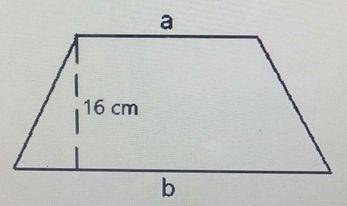
Area of trapezium = \(\frac{1}{2}(a + b) h\)
⇒ \(\frac{1}{2} (a + b)\times 16 = 200\)
⇒ 8(a + b) = 200
⇒ a + b = \(\frac{200}{8}\) = 25 -----(i)
⇒ a : b = 2 : 3
⇒ \(\frac{a}{b} = \frac{2}{3}\)
⇒ 3a = 2b
⇒ a = \(\frac{2b}{3}\) -------(ii)
Substitute \(\frac{2b}{3}\) for a in equation (i)
⇒ \(\frac{2b}{3}\) + b = 25
\(\frac{5b}{3}\) = 25
⇒ b = 25 ÷ \(\frac{5}{3} = 25\times\frac{3}{5} = 15cm\)
From equation (ii)
⇒ a = \(\frac{2 \times 15}{3} = 2\times5 = 10cm\)
∴ Lengths of each parallel sides are 10cm and 15cm
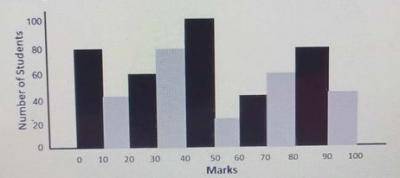
Study the given histogram above and answer the question that follows.
What is the total number of students that scored at most 50 marks?
380
340
360
240
Correct answer is C
Total number of students that scored at most 50 marks = 100 + 80 + 60 + 40 + 80 = 360
Find the volume of a cone which has a base radius of 5 cm and slant height of 13 cm.
\(300\pi\) cm\(^3\)
\(325\pi\) cm\(^3\)
\(\frac{325}{3}\pi\) cm\(^3\)
\(100\pi\) cm\(^3\)
Correct answer is D
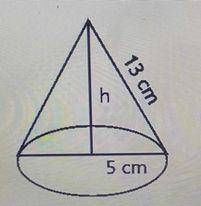
Volume of a cone = \(\frac{1}{3}\pi r^2 h\)
r = 5 cm
l = 13 cm
Using Pythagoras theorem
⇒ \(13^2 = 5^2 + h^2\)
⇒ \(169 = 25 + h^2\)
⇒ \(169 - 25 = h^2\)
⇒ \(h^2 = 144\)
⇒ \(h = \sqrt144 = 12 cm\)
∴ Volume of the cone = \(\frac{1}{3} \times\pi\times 5^2 x 12 = 100\pi\) cm\(^3\)
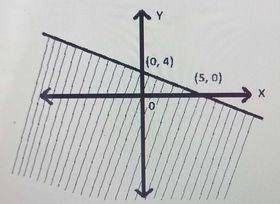
Which inequality describes the graph above?
\(4y + 5x ≥ 20\)
\(5y + 4x ≤ 20\)
\(4y + 5x ≤ 20\)
\(5y + 4x ≥ 20\)
Correct answer is B
First, we find the equation of the boundary line using the two intercepts.The slope is
m = \(\frac{4 - 0}{0 - 5} = {4}{5}\)
The y-intercept is 4
The slope-intercept form of the equation is therefore
y = -\(\frac{4}{5} x + 4\)
\(\implies y + \frac{4}{5} x = 4\)
Multiply both sides by \(\frac{5}{4}\)
\(\implies\frac{5}{4}(y +\frac{4}{5} x) = 4\times\frac{5}{4}\)
\(\implies\frac{5}{4} y + x = 5\)
Multiply both sides by 4
⇒ \(5y + 4x = 20\)
The inequality is therefore either \(5y + 4x ≤ 20\) or \(5y + 4x ≥ 20.\)
Using the test point (0, 0) -The origin
⇒ 5(0) + 4(0) ≤ 20
⇒ 0 ≤ 20 (True)
∴ The inequality is \(5y + 4x ≤ 20\)
JAMB Subjects
Aptitude Tests
Latest Jobs
Indorama Eleme Fertilizer & Chemicals Limited (IEFCL) Graduate Engineer Internship Program 2024
Diploma Engineer Internship Program at Indorama Eleme Fertilizer & Chemicals Limited (IEFCL)
Admin Officer - Airline Industry at Ascentech Services Limited
Area Sales Manager at Airtel Nigeria
State Business Manager at Airtel Nigeria
Inventory Manager at a Reputable Agricultural Company
Supply Chain Officer at Kellogg's Tolaram Nigeria Limited (KTNL)
Warehouse Manager at Shulifang Biotechnology FZE
Capability Development & Execution Excellence Manager (Rivers) at Airtel Nigeria
Regional Security Manager - Northeast Region at Airtel Nigeria